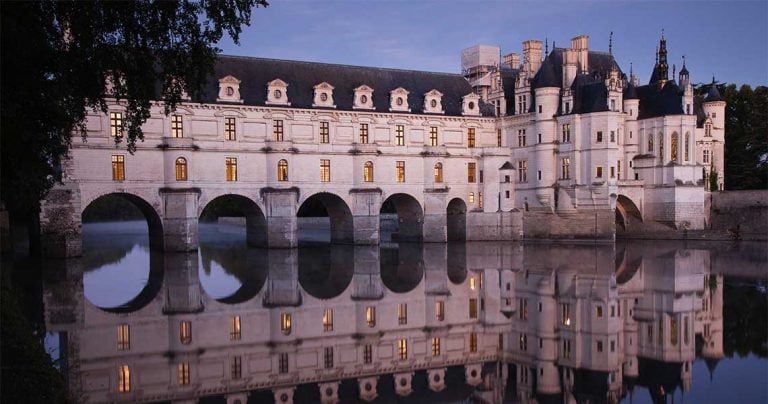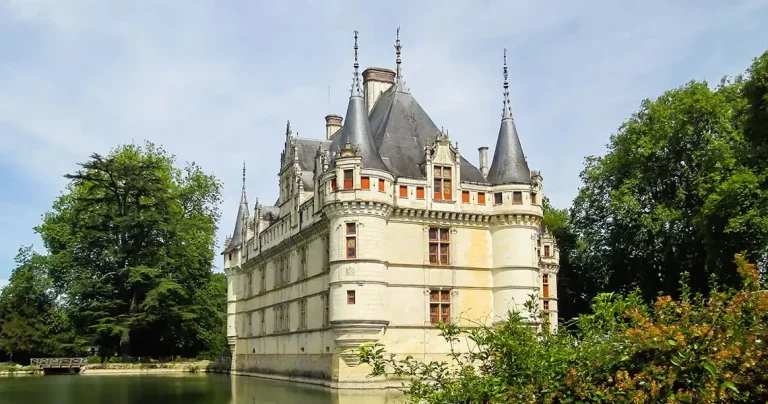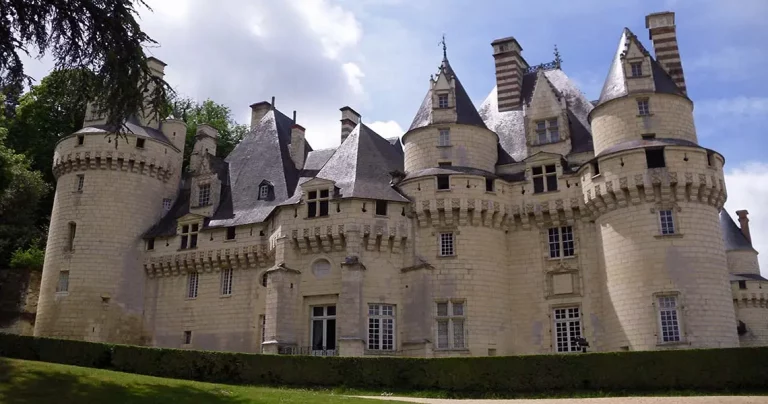Château Amboise
The Royal Château d’Amboise sits atop a ridge overlooking the town of Amboise and the beautiful Loire Valley. With its panoramic observation point from the Tour des Minimes, it is easy to see why an assortment of occupiers favoured this fortress for its strategic advantage.
Short History
Before the Crown confiscated it in 1434, the Château belonged to the House of Amboise for over four centuries. It soon became the favourite of French kings from Louis XI to Francis I.
This formidable fortress ensured the royal family’s safety in the absence of the royal couple. It was the stage for numerous political events in the Kingdom: births, christenings, marriages, conspiracies and peace treaties.
It provided a ‘kindergarten’ for French Kings: Charles VIII was born here, Francis I, his sister, Marguerite d’Angouléme, the children of Henri II and Catherine de Medici, were raised here.
With a passion for Italian culture, Charles VIII invited many Italian architects and artisans to Amboise, who remodelled the Château in the style of the Italian Renaissance. He also employed an Italian horticulturist to improve the gardens.
Unfortunately, Charles did not live long enough to enjoy the Italian Renaissance as he managed to kill himself in 1498 by hitting his head on a door lintel while on his way to play tennis.

During the reign of Francis I, the French got their hands on the Mona Lisa, courtesy of Leonardo da Vinci. He came to Amboise in 1515 at the invitation of Francis I and resided at the Château Clos Luce, 500 metres up the road from the Château d’Amboise.
Perhaps the bleakest moment in the Château’s history was in 1560, during the Wars of Religion when 1,200 protestants were disembowelled and hung from the Château walls. The royal court soon had to leave the town because of the smell of corpses.
The Château d’Amboise never returned to royal favour. From the 17th century onward, it served as a prison. With its glory days gone, it quickly fell into disrepair.
Much of the Château was demolished during the French Revolution but partly rebuilt in the 19th century by King Louis-Philippe.
The Château suffered further damage during the Second World War and is now maintained as a tourist attraction by a descendant of Louis-Philippe.
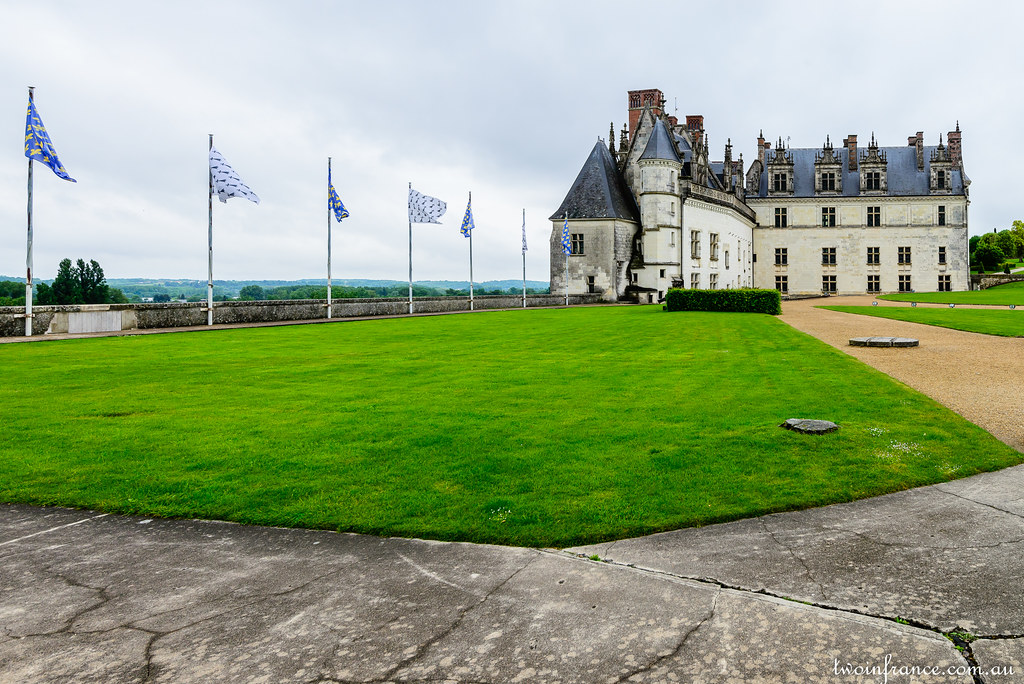
Chapelle de Saint-Hubert
As you approach the Château, the most striking feature is the Chapelle de Saint-Hubert perched on top of the fortifications. Built in 1491 by Charles VIII and his wife Anne de Bretagne, it also fell into disrepair and was eventually destroyed in 1808.

The restored chapel is an excellent example of Gothic architecture and even includes two fireplaces to keep the king warm while he prayed. The entrance to the chapel, dedicated to Saint Hubert, the patron saint of hunters, recalls the legend of Hubert meeting a stag with a cross between its antlers while hunting. A 19th-century sculpture of the Virgin flanked by Charles and Anne appears above this stone relief.

The Chapelle de Saint-Hubert is considered to be da Vinci’s burial place. Conspiracy theories abound, but no one wants to dig up the floor to determine if the story is true.

The Château
Across from the chapel is the main body of the Château. Although significantly diminished in size from its heyday, the Château is nevertheless an impressive sight. Only two wings remain of what was once a much more extensive castle.
The various rooms display an impressive collection of Gothic and Renaissance furniture and hand-woven tapestries from Flanders and Aubusson.
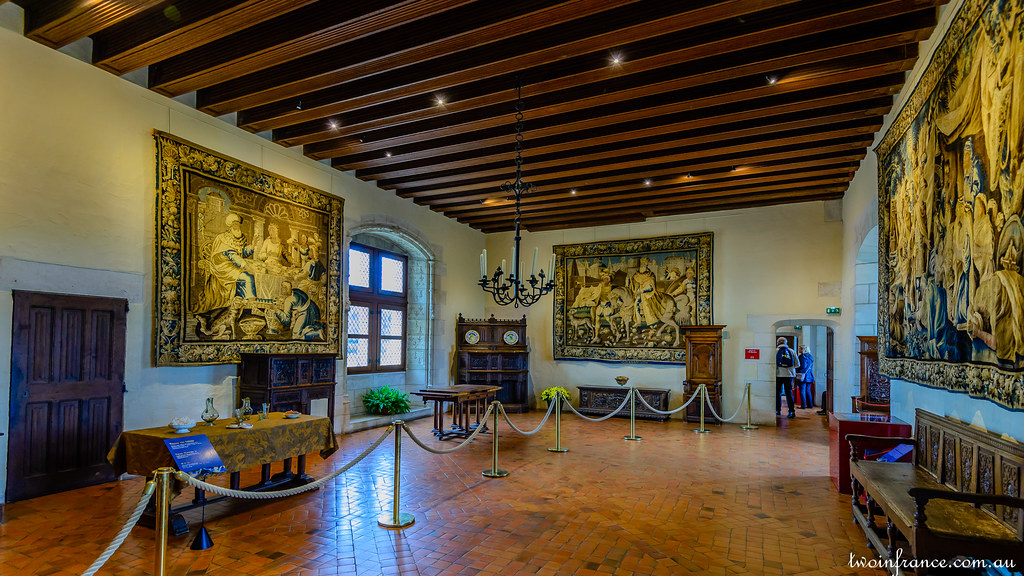
The Council Room is truly magnificent, with a double vaulted stone ceiling and fireplaces at either end.

Climb to the top of the Tour des Minimes and look over the Loire 40 metres below towards the Ile d’Or, historically significant for the many peace treaties signed there.

Gardens
Conclude your visit with a stroll through the magnificent landscaped gardens, notably the Naples Terrace, the Upper Terrace and the Jardin d’Orient.

For such a historical monument, the Château d’Amboise does not attract many tourists, at least on our visit. Possibly, we were lucky, and I’m not complaining. Of all the Châteaux we visited in France, it is one of the few without scaffolding. But it needed a wash desperately.
After all that walking and climbing, you will probably require some refreshments. So, make your way down to the township below and on the corner of Place Michel Debré and Rue Nationale, you will find the famous Biscuiterie d’Amboise. All kinds of biscuits and cakes with free sampling.
Information
Place Michel Debré
+33 2 47 57 00 98
[email protected]
Open every day except Jan 1 and Dec 25. 9:00 am to 6:00 pm (variable hours depending on season)
Train: TGV to Tours and connecting train to Amboise. Car: Motorway A10 and take the Amboise exit
www.chateau-amboise.com



